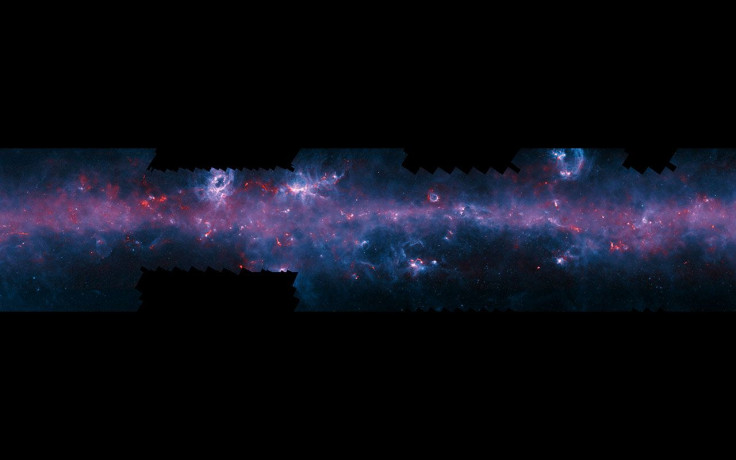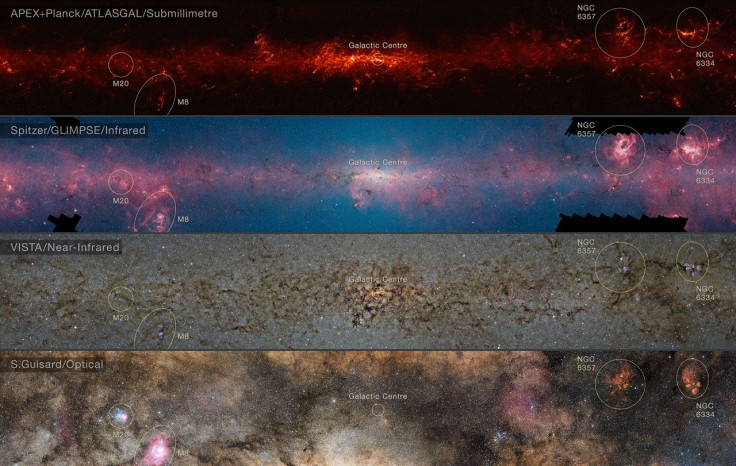Milky Way Survey Maps The 'Cold Universe' Of Star Forming Regions In Southern Galaxy

The APEX Telescope Large Area Survey of the Galaxy (ATLASGAL) completed its study of the Milky Way, the European Southern Observatory announced Wednesday. The ATLASGAL survey mapped the southern Milky Way's star formation regions where temperatures just above absolute zero make it a perfect incubator for new stars.
The Atacama Pathfinder EXperiment (APEX) telescope is positioned 5,100 meters (just over 3 miles) above sea level in the Atacama region of Chile. The telescope is able to map the southern night sky in submillimeter wavelengths — between infrared light and radio waves. The telescope is located in one of the driest parts of Earth to reduce any interference from water vapor in the atmosphere. Through the submillimeter range, the APEX telescope can observe the "cold universe."
The cold gas clouds where new stars are formed appear dark in visible light, give off radiation in the submillimeter range that the APEX telescope can detect. The LArge BOlometer Camera (LABOCA) acts a thermometer cooled to less than 0.3 degrees above absolute zero. LABOCA detects small changes in radiation from the cold gas and dust.

"ATLASGAL has allowed us to have a new and transformational look at the dense interstellar medium of our own galaxy, the Milky Way. The new release of the full survey opens up the possibility to mine this marvelous dataset for new discoveries," Leonardo Testi, from ESO and member of the ATLASGAL team, said in a statement.
The astronomers combined data collected by the Planck space telescope to cover a larger area of the Milky Way. By combining these with observations from Planck, we can now obtain a link to the large-scale structures of giant molecular clouds," Timea Csengeri, of the Max Planck Institute for Radio Astronomy, said in a statement.
In addition to combing through the ATLASGAL data to gain new insights to the cold star formation regions in the Milky Way, astronomers can use the survey to further observations. The Atacama Large Millimeter/submillimeter Array (ALMA) is more powerful than the APEX telescope and can deliver more detailed observations based on the ATLASGAL survey.
© Copyright IBTimes 2025. All rights reserved.






















